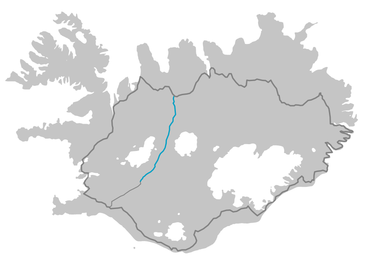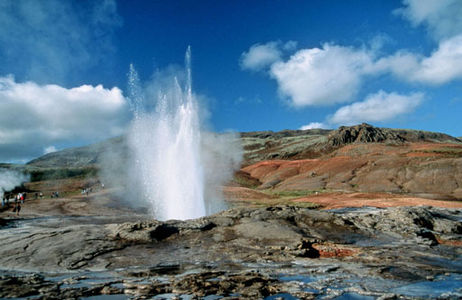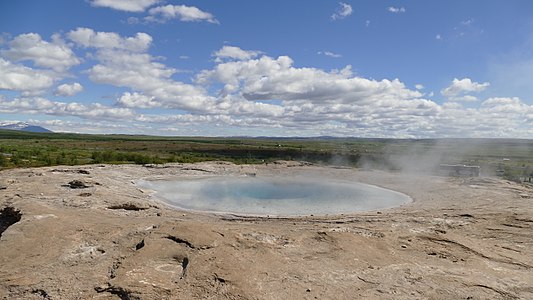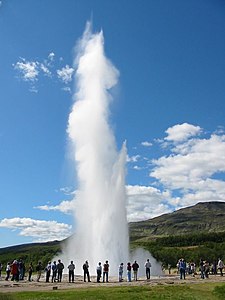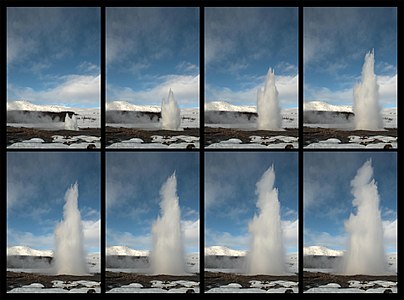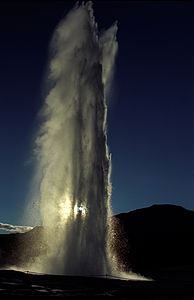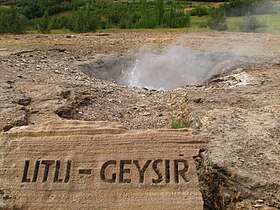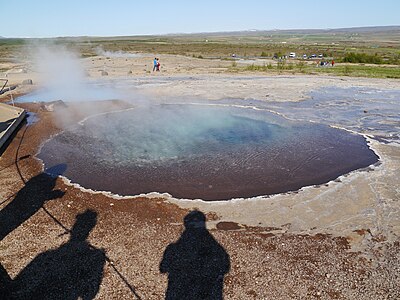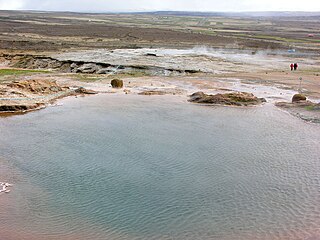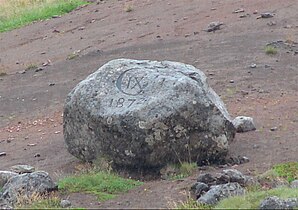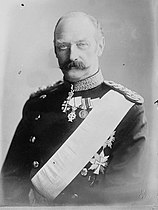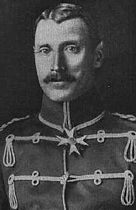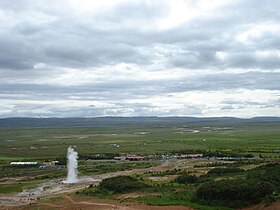Geysir Geothermal Field
Location[edit]
The Geysir Geothermal Field, located at a distance of about 120 km from Reykjavík, is approached best by Road no. 1 to Ingólfsfjall between Hveragerði and Selfoss, and then by Road 35 in direction of w:Kjölur.
-
The geothermal field is located at about 10 km to the southwest of the southern end of Kjölur highland road.
-
Geysir Geothermal Field is situated next to Gullfoss.
Views of the whole geothermal field[edit]
Overview from atop the lava dome Laugarfjall: The mostly inactive w:Great Geysir to the left, the active geyser w:Strokkur in the middle, to the right and in front other hot springs and in the background hotel, restaurants and other facilities
The Great Geysir[edit]
It has been active at least since the 13th century, but nearly dried up at the beginning of the 20th century. Since then, activity mostly was seen after more important earthquakes in the region like in 2000 and 2008.
-
The inactive Great Geysir with its sinter terrace
-
Small eruption of the Great Geysir in 2000
-
An eruption of the Great Geysir in 2006
-
A rare sight: Strokkur and the Great Geysir erupting simultaneously
-
The inactiv Great Geysir in 2017
Strokkur[edit]
Strokkur is the most dependable of Iceland's geysers and hot springs. His eruptions take place regularly in about 5-10 minutes intervals.
-
Strokkur eruption in 2003
Litli Geysir[edit]
-
The "Small Geysir"
Blesi[edit]
Blesi consists of two different pools of different water colours - and chemical composition. In the space between her and Strokkur, now closed to visitors, geologists presume development of a third geyser.
-
Blesi and the Great Geysir
-
In direction of Strokkur
Konungshver[edit]
The "King's Hot Spring" is one of the bigger hot springs in the area and the one placed highest on the slopes of Laugarfjall lava dome.
-
Algae and archaea growing in the runoff of Konungshver
-
View from Konungshver to the sinter terrace of the Great Geysir
Smiður: Use of geothermal waters[edit]
Smiður is a small, but very active hot spring in the geothermal field between Strokkur and the road. It's waters are used for household purposes.
Konungssteinar[edit]
In 1874, 1907 and 1922 Danish kings visited the country and Geysir Geothermal Field, the first visits Danish kings ever paid to Iceland, part of their kingdom from 1380 til 1944. Memorial stones connected to each of these visits are to be found at Geysir Geothermal Field.
-
Christian IXs monogram, 1874
-
Frederik VIII monogram, 1907
-
Christian Xs monogram, 1922
Facilities[edit]
A hotel, some restaurants and a shop with gas station can be found at Geysir Geothermal Field.
Waterfall Gullfoss[edit]
In a distance of just about 10 km, lies the waterfall Gullfoss which is also part of the Golden Ring of South Iceland's visitor attractions.
